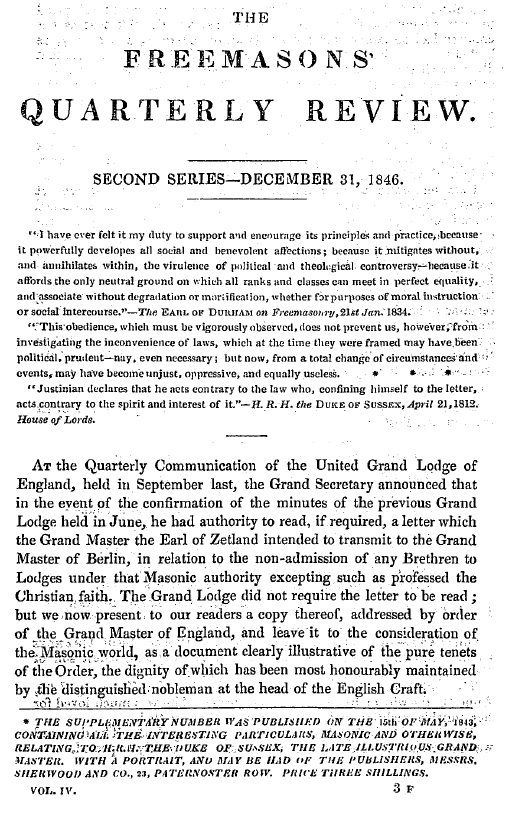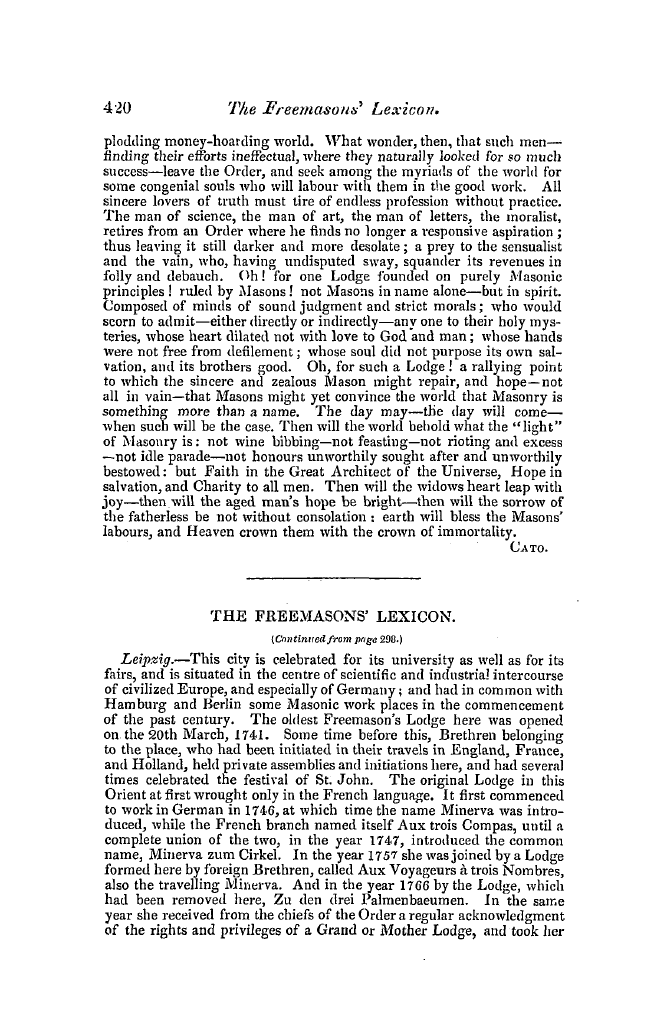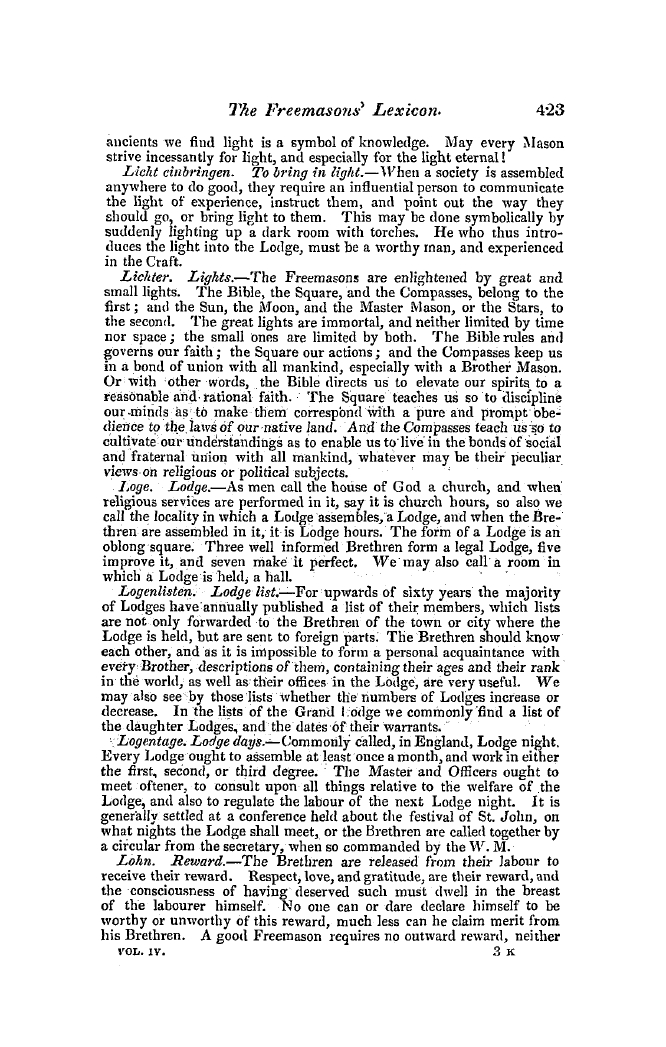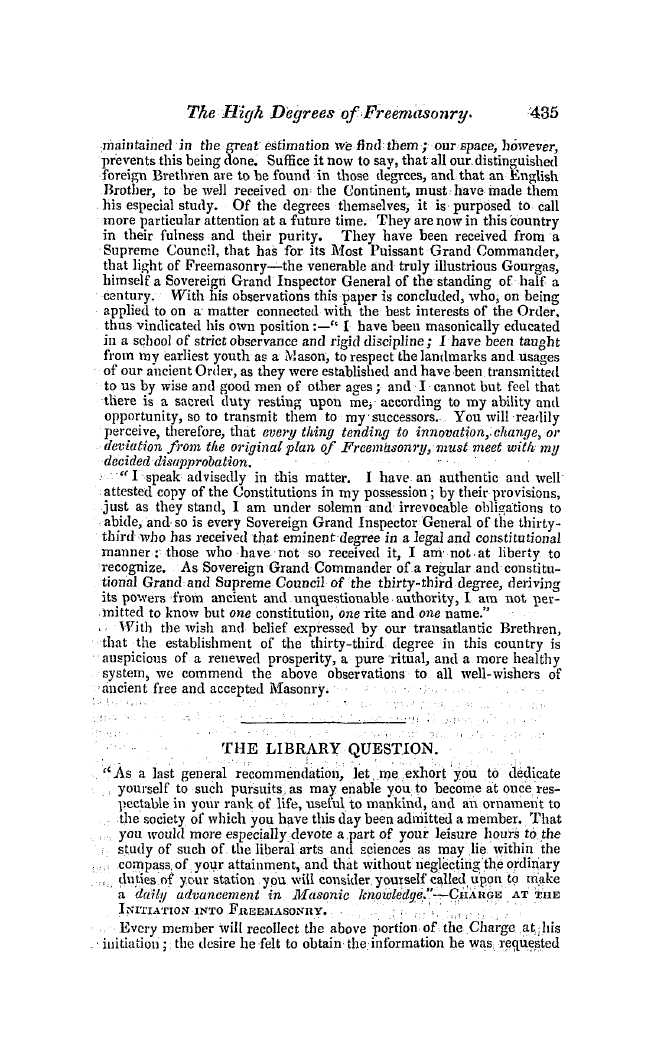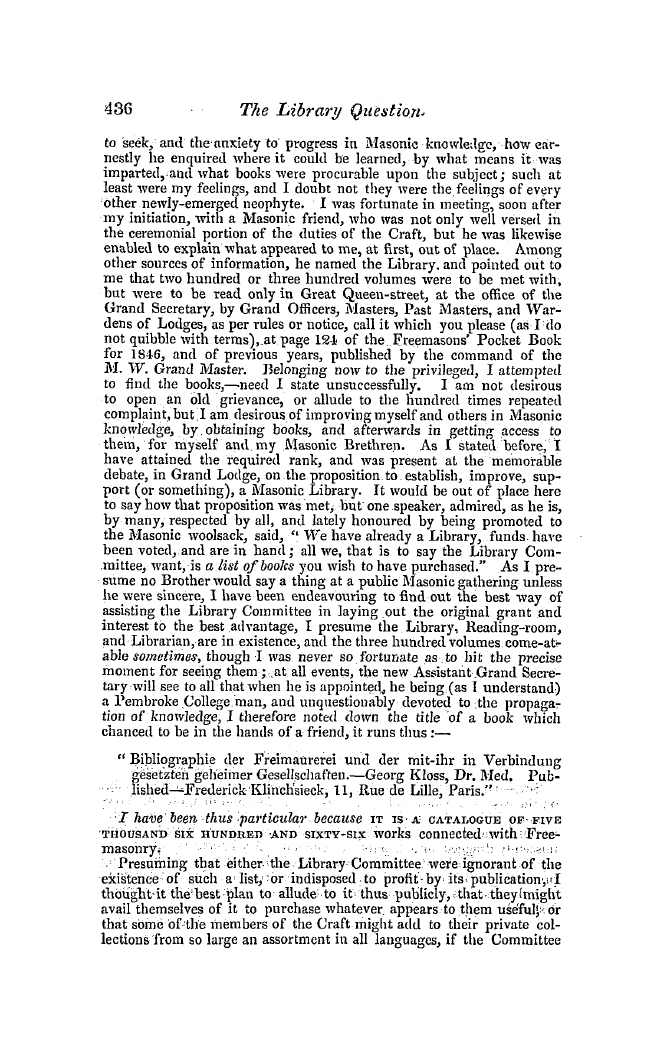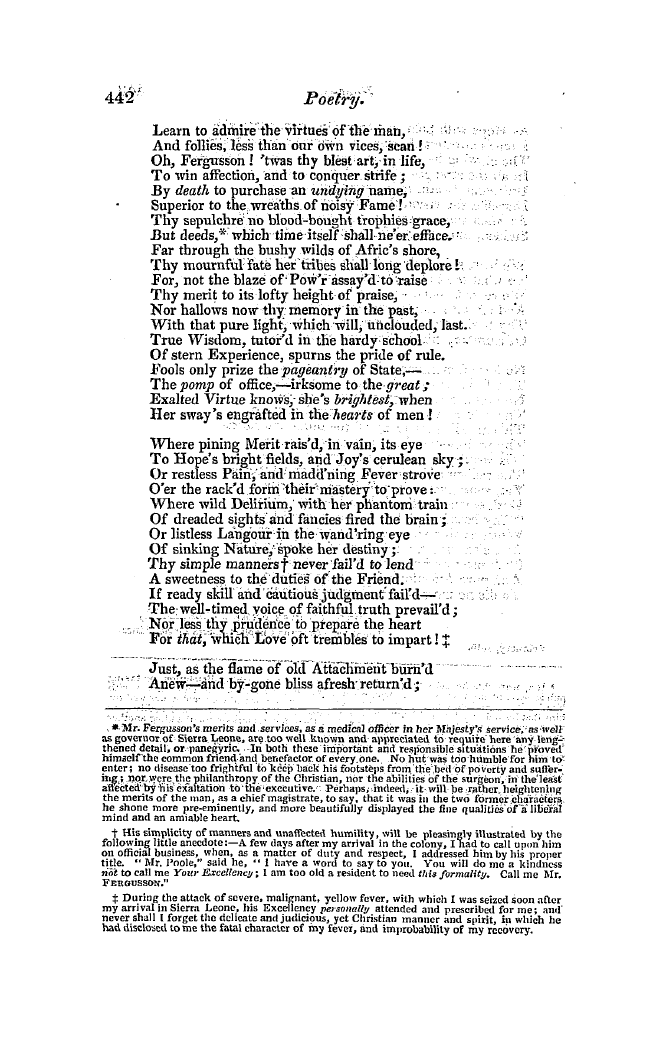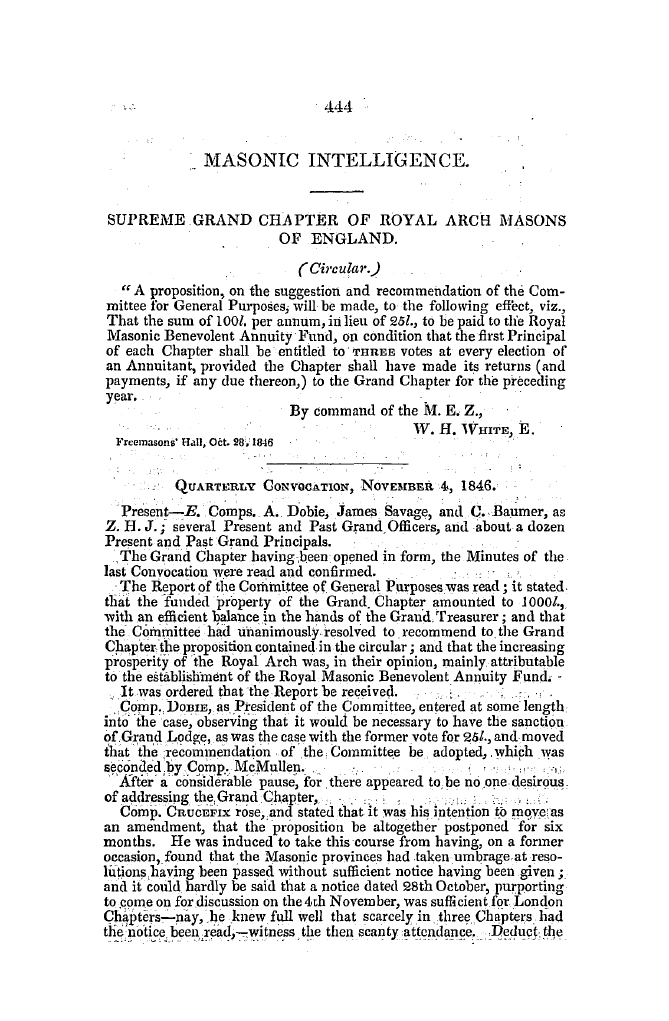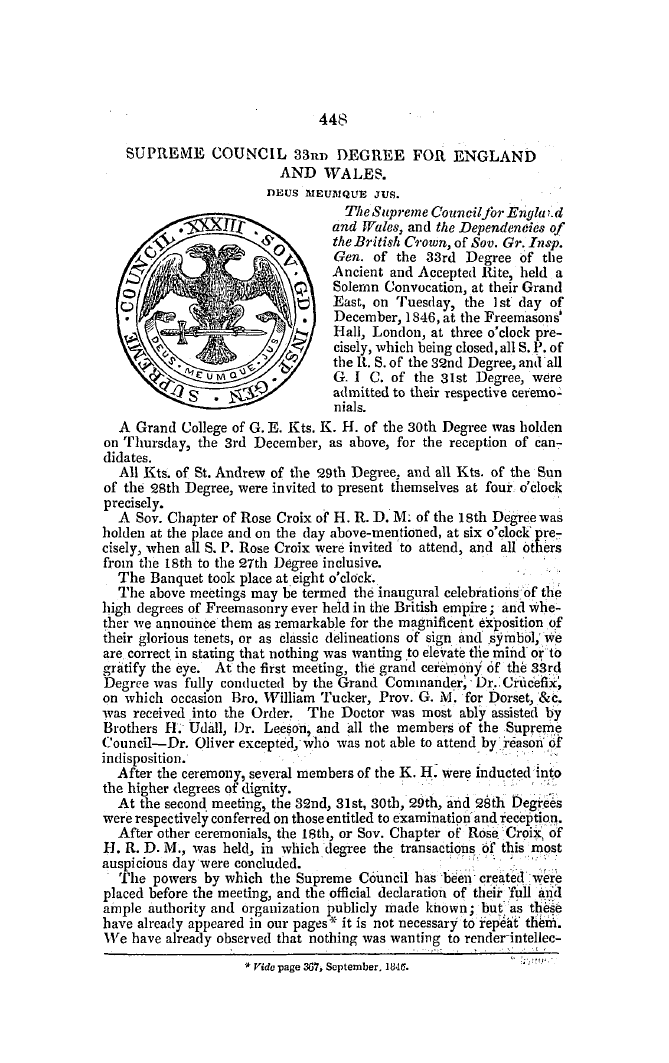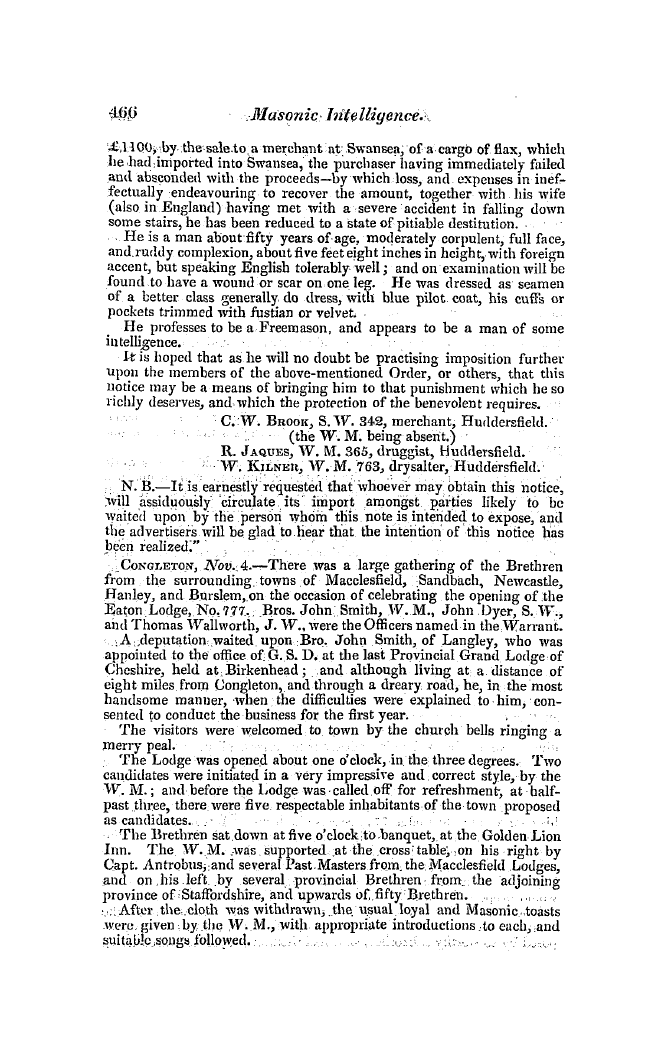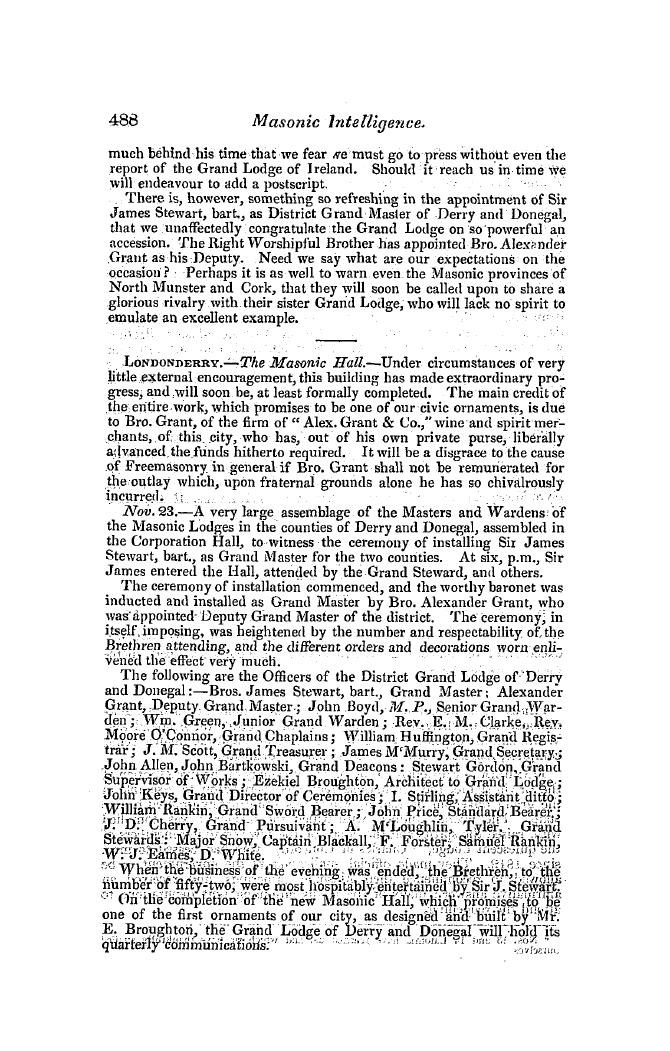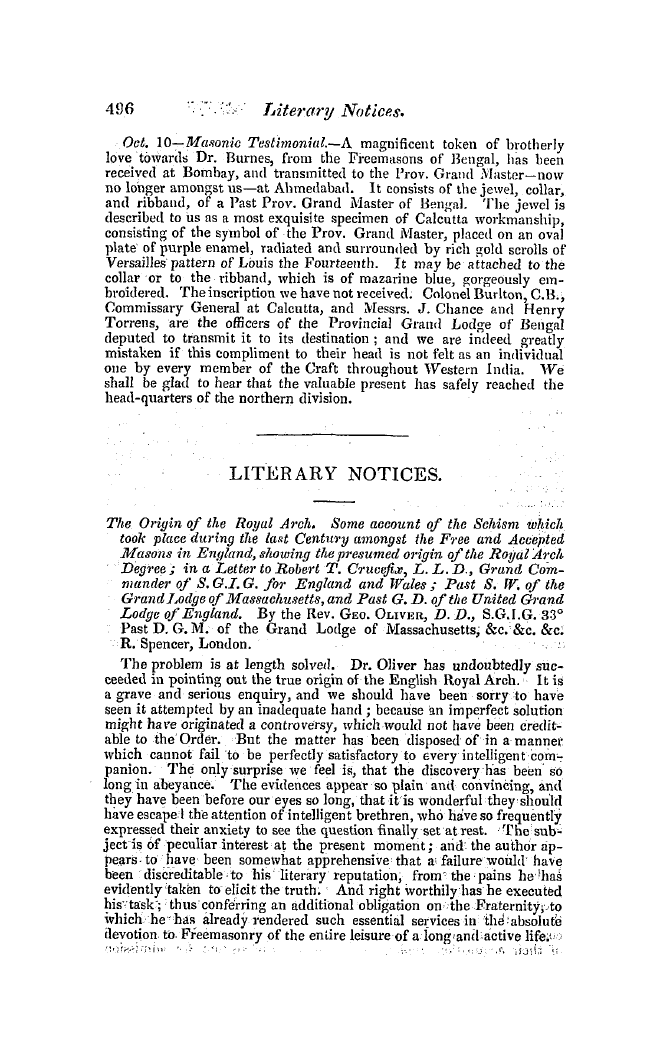-
Articles/Ads
Article THE HIGH DEGREES OF FREEMASONRY. ← Page 3 of 5 →
Note: This text has been automatically extracted via Optical Character Recognition (OCR) software.
The High Degrees Of Freemasonry.
assembly held at Berlin on the 2 Gth of October , A . D . 1762 , for their ratification , on which occasion his majesty , Frederick the Second , King of Prussia , was proclaimed as chief of the eminent degrees of Freemasonry , with the rank of Sovereign Grand Inspector General and Grand Commander . From that time the higher Chapters could not be opened without his presence , or that of his substitute , and a special patent appears to have been necessary for each assembly so held in his absence .
From the Masonic knowledge thus accumulated in one perfect system , all that is ancient in Freemasonry is to be found , and it is from the pure stores then collected that all that is true in systems , that differ in name from the ancient and accepted rite , have been made up . It has been asked what part of this system the Knight Templars of England occupy ? The English Knight Templar , strictly speaking , may be considered as not a Masonic degree . It is a high order of
chivalry ; and as such deservedly takes its stand very high amongst ancient orders of knighthood . That none but Masons belong to it is quite accidental , and has probably been brought about by the fact that none but Masonic assemblies are privileged in this country to meet in secret societies . That the Order , as now given , is not essentially Masonic there exists much evidence , and it is only until lately that Encampments of Knight Templars have ceased to meetwhose members were not Masons .
, The Encampment of Baldwin , as established at Bristol , claims to have been founded by the Templars who returned with Richard the First from Palestine . In fact , it is generally understood that the late Most Eminent Grand Master of Templars , his Royal Highness the Duke of Sussex , was not only Master of English Templars but also Grand Prior
for England , the latter , of course , being given by a foreign community , not assuming to be Masonic . So convinced was his Iloyal Highness that the Knight Templars was not strictly a Masonic order , that this was alleged as the reason why no Grand Conclave was held for twenty years and more before his death . Let , therefore , the Conclave of Templars in England take the place , that it is so well entitled to , amongst the other orders of chivalry ; but let no Templar , who wishes to maintain a consistent reputation merely from the accident that he himself is a Mason ,
attempt to place the order of Templars , as given in England , amongst the grades of pure ancient free and accepted Masonry . With the ancient and . accepted rite it has nothing in common , having a different government in . its ' own Grand Conclave and Grand Master , but deserving the highest respect from its undoubted antiquity . . . .. . . His . majesty the King . of Prussia being placed , at the head of the eminent , degrees , of freemasonry , he immediately took precautions , that . purged as they now were of all modern interpolations and impurities , they should be transmitted to all future times ; it was , therefore , his
object to see that this was brought about , by haying them placed in the keeping of the most renowned Masons in distant places . This was very soon . effected on the continent of Europe , Louis of Bourbon , A . I > . 17 b' 5 , receiving and acting on his deputation for France . In fact , from that time , tlie superior degrees were in the greatest request throughout Europe , aiid continued to , be , under the , supervision of the enlightened ;' scholars ; of the ,, age .,,.. And it . is in these . degrees that all our distinguished foreign Brethren are to be , found at the present day . These , the , high degrees of the . Order ,, were yery early placed under efficient control in' the New \ Viorld . j Craft Masonry appears to have been placed there by ' authority pfii ; the English Grand , Lodge , about the . year , 1700 . ., ; At all , eyents , ' a
Note: This text has been automatically extracted via Optical Character Recognition (OCR) software.
The High Degrees Of Freemasonry.
assembly held at Berlin on the 2 Gth of October , A . D . 1762 , for their ratification , on which occasion his majesty , Frederick the Second , King of Prussia , was proclaimed as chief of the eminent degrees of Freemasonry , with the rank of Sovereign Grand Inspector General and Grand Commander . From that time the higher Chapters could not be opened without his presence , or that of his substitute , and a special patent appears to have been necessary for each assembly so held in his absence .
From the Masonic knowledge thus accumulated in one perfect system , all that is ancient in Freemasonry is to be found , and it is from the pure stores then collected that all that is true in systems , that differ in name from the ancient and accepted rite , have been made up . It has been asked what part of this system the Knight Templars of England occupy ? The English Knight Templar , strictly speaking , may be considered as not a Masonic degree . It is a high order of
chivalry ; and as such deservedly takes its stand very high amongst ancient orders of knighthood . That none but Masons belong to it is quite accidental , and has probably been brought about by the fact that none but Masonic assemblies are privileged in this country to meet in secret societies . That the Order , as now given , is not essentially Masonic there exists much evidence , and it is only until lately that Encampments of Knight Templars have ceased to meetwhose members were not Masons .
, The Encampment of Baldwin , as established at Bristol , claims to have been founded by the Templars who returned with Richard the First from Palestine . In fact , it is generally understood that the late Most Eminent Grand Master of Templars , his Royal Highness the Duke of Sussex , was not only Master of English Templars but also Grand Prior
for England , the latter , of course , being given by a foreign community , not assuming to be Masonic . So convinced was his Iloyal Highness that the Knight Templars was not strictly a Masonic order , that this was alleged as the reason why no Grand Conclave was held for twenty years and more before his death . Let , therefore , the Conclave of Templars in England take the place , that it is so well entitled to , amongst the other orders of chivalry ; but let no Templar , who wishes to maintain a consistent reputation merely from the accident that he himself is a Mason ,
attempt to place the order of Templars , as given in England , amongst the grades of pure ancient free and accepted Masonry . With the ancient and . accepted rite it has nothing in common , having a different government in . its ' own Grand Conclave and Grand Master , but deserving the highest respect from its undoubted antiquity . . . .. . . His . majesty the King . of Prussia being placed , at the head of the eminent , degrees , of freemasonry , he immediately took precautions , that . purged as they now were of all modern interpolations and impurities , they should be transmitted to all future times ; it was , therefore , his
object to see that this was brought about , by haying them placed in the keeping of the most renowned Masons in distant places . This was very soon . effected on the continent of Europe , Louis of Bourbon , A . I > . 17 b' 5 , receiving and acting on his deputation for France . In fact , from that time , tlie superior degrees were in the greatest request throughout Europe , aiid continued to , be , under the , supervision of the enlightened ;' scholars ; of the ,, age .,,.. And it . is in these . degrees that all our distinguished foreign Brethren are to be , found at the present day . These , the , high degrees of the . Order ,, were yery early placed under efficient control in' the New \ Viorld . j Craft Masonry appears to have been placed there by ' authority pfii ; the English Grand , Lodge , about the . year , 1700 . ., ; At all , eyents , ' a
